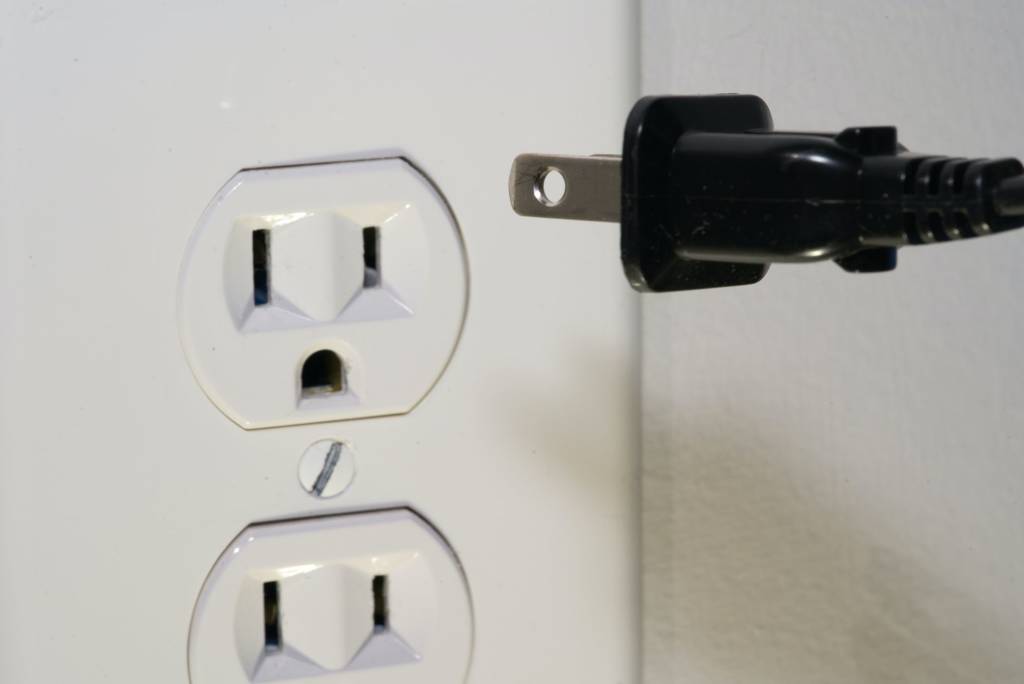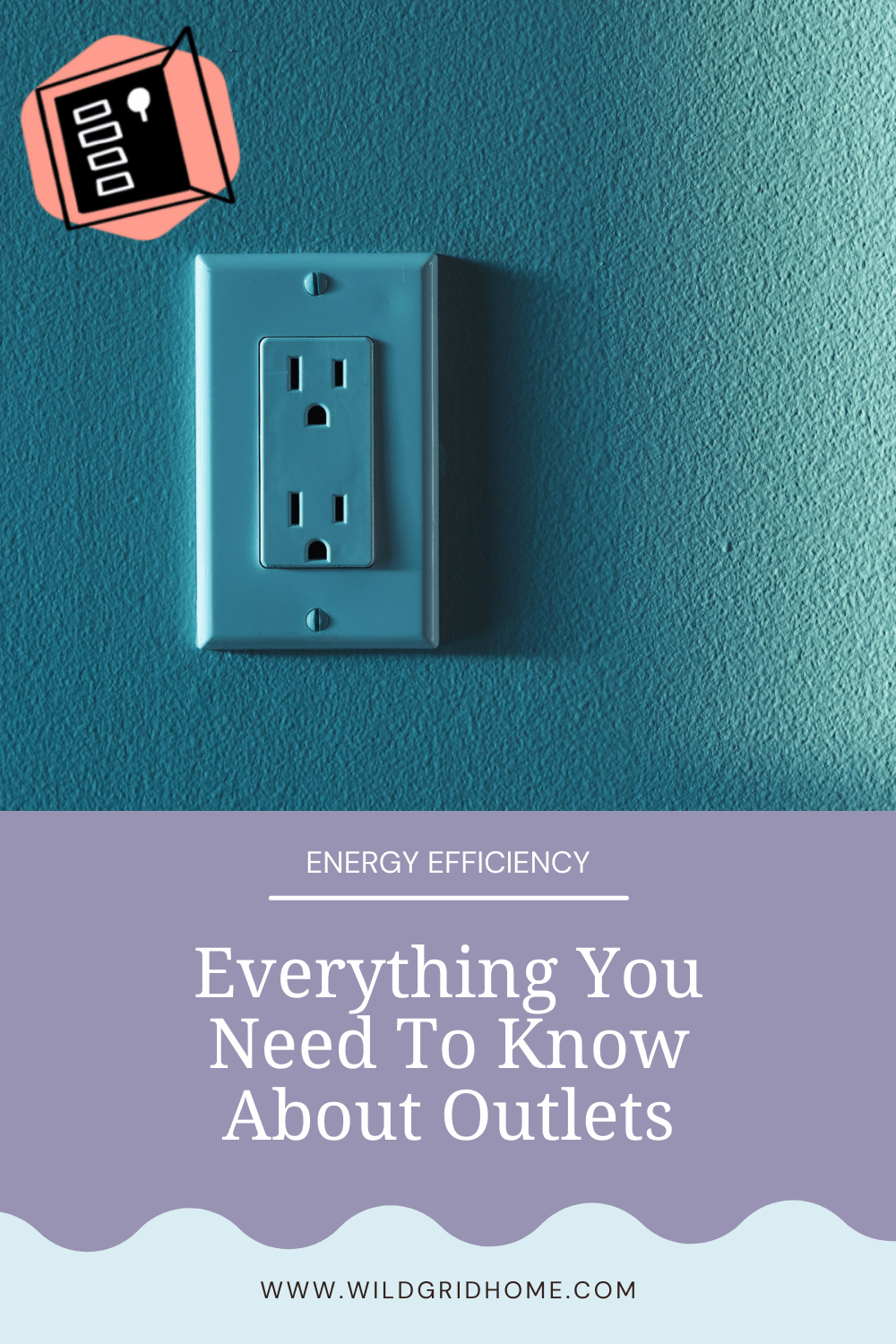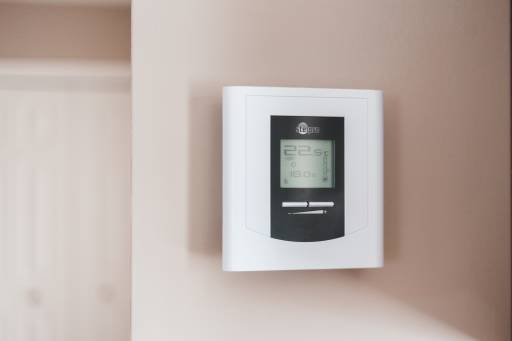EVERYTHING You Need to Know About Outlets

Even though they all look pretty much the same, your house probably has tons of different kinds of outlets.
Now, outlets are definitely not the sexiest thing in the world, but knowing their distinctions can help you make better decisions about where you plug in your appliances. 🔌

From power plants to plugs…
The electricity that was used to charge the device you’re reading this blog post on started its journey way back when it was generated at a power plant. 🏭
Power plants can conjure up electricity in different ways, but the fundamental process is pretty universal: thermal energy is produced in some way or another to heat up water and turn it into steam, which is then used to turn turbine electric generators.
Those generators produce a massive amount of electricity that is distributed to different substations via power lines, and those substations allocate the electricity locally to different streets.
When it gets to your street, the electricity is passed through a transformer to convert it to a voltage that is safe for your home, and then it is delivered right to your electrical panel.
This electrical panel, which you might affectionately know as “the breaker box”, “the fuse box”, or “that thing I go fiddle with when the power goes out”, is the electrical heart of your home, and through wiring hidden in your walls, it delivers electricity to all of your outlets.
The basic structure of an outlet
Picture an outlet in your mind’s eye. It probably has three holes: two vertical rectangular ones side-by-side, one a little longer than the other, with a third semi-circular one underneath them.
Behind each of these holes is a different wire that allows electricity to safely flow through the devices that you plug in.
The smaller of the two rectangular holes is connected to a “hot” wire; this wire carries electricity from your breaker box to the outlet. The longer rectangular hole is connected to a “neutral” wire, which carries electricity back to the electrical panel away from your outlet.
The third hole is connected to a “ground” wire, which is just a safety feature; it is connected to the breaker box, but also to bits of metal that the hot wire could potentially touch (like pipes in the wall, the metal fixtures of the outlet, and so on).

If for some reason the electricity leaving the hot wire is not returning to the electrical panel through the neutral wire, and it is instead traveling through one of those other bits of metal, the ground wire provides a literal path of least resistance for the electricity to travel back to the breaker box and trigger a break.
This helps protect you from electrocution and makes sure that electricity does not continue to flow to the outlet while it is unsafe. (Note: if you live in an older house, your outlets might be missing this third hole. No biggie. Whatevs.)
It’s important to note that unless there is something - an “electrical load” - plugged into an outlet, there is no electricity flowing through it. This is because the hot wire and the neutral wire need to be connected in order to create a full circuit for the electricity to travel through.
I’m DYING to know… what kinds of outlets do I have?
There are two main characteristics that distinguish outlets from one another: their supply of voltage (measured in volts) and their supply of current (measured in amps).
It’s very easy to get bogged down in the specifics of these concepts.
Remember that electricity is just flowing electrons, or negative charges. The simplest way to think of voltage is as a sort of “electrical pressure”: the force with which electrons are being pushed through a wire (or whatever material they are traveling through). The current is a measure of how fast those electrons are moving through the wire - it’s often described as “the flow of electricity.”
As you might have guessed, current is actually the result of voltage. But, voltage is not the only thing that determines current, because the “resistance” of the material the electrons are traveling through also has to be taken into account.
If that all sounds just a little too much like a physics class you slept through back in high school (and your eyes are starting to get heavy…), don’t worry about it.
The most important thing for you to know as a homeowner is that the voltage and the current multiplied together tell you the amount of power (measured in watts) that an outlet is able to provide to the thing plugged into it.
The Four Types of Outlets You Are Likely to Find In Your Home 🏠
If you went looking, you’d probably find these four different outlets in your house.
- 15 Amp/120 Volt Outlets: These outlets are the most common. If you have your phone charger plugged in next to your bed, it’s probably plugged into this sort of outlet.
- 20 Amp/120 Volt Outlets: These are also common. You’re most likely to find them in your kitchen, because they are used for appliances that need just a little more “oomph”, like your microwave or fridge.
- 20 Amp/240 Volt Outlets: This is when you start to see a little more power. If you have an electric stove or oven, it’s probably plugged into this sort of outlet.
- 30 Amp/240 Volt Outlets: Ooh lala look at that amperage. If you have a heavy duty air conditioner, it’s probably getting its power from one of these bad boys.
There are also 30 Amp/120/240 Volt outlets and 50 Amp/120/240 Volt outlets, but you’re unlikely to find them in your home (bad news if you fancy yourself an outlet collector) - they’re more common in industrial spaces like laundromats and factories.
These are the four basic outlet types, but they might have additional features based on where they are in your house.
For example, in your bathroom and kitchen you might have GFCI outlets, or “Ground-Fault Circuit Interrupter” outlets, which have special characteristics that make them safer to use in the presence of water.
If you live in a newer house, you might have more Tamper Resistant (TR) outlets, which have little plastic coverings just inside of the two rectangular holes (this is also a safety feature, albeit an annoying one).
Why does all this amp and volt stuff matter? 😴
It’s important to know what sort of outlets you have or need when you are ready to plug in a new appliance, especially a heavy duty one. If you plug an appliance into an incompatible outlet, you can severely damage the device, and may even destroy your breaker box or cause an electrical fire.
Appliances will usually tell you how much power they require in Watts, either in the description/instructions or somewhere on the appliance itself.
Remember that the power an outlet can supply is equal to its amperage times its voltage. So a 15 Amp/120 Volt outlet can provide 1800 Watts of power. At the other end of the spectrum, a 30 Amp/240 Volt outlet can provide 7200 Watts of power.
The rule of thumb is that whatever you plug into your outlet should not require more than 80% of the power it is able to supply. So if you’re working with a 30 Amp/240 Volt outlet, you do not want to plug in anything that needs more than 5760 Watts of power. This is not a hard and fast rule, but it’s worth keeping in mind.

Well how do I tell all these outlets apart??
If you’re trying to figure out what sort of outlet you have just by looking at it, here are some clues to help you out. 🔎
First of all, 20 Amp outlets usually have a little horizontal notch in the longer rectangular hole (Pop quiz: which wire is that connected to?) - this is to accommodate different plug types that higher power devices may have. 15 Amp outlets don’t. 30 Amp outlets will have holes that look completely different - they might even have an extra one!
120 volt outlets are usually rectangular, while 240 volt ones are more likely to be round.
But, if your outlets are older, these hints might be misleading. Your best bet is to take off the outlet cover and look to see if the outlet’s information is printed on the hardware.
Take note that on a 120 volt outlet, the voltage may be recorded as 110, 115, 120, or 125, and on a 240 volt outlet, you might see 220, 240, 230 or 250. This has to do with the fact the nomenclature has changed over time, and the decisions made by the designers of the outlets to try and acknowledge variations in voltage resulting from the transport of the electricity. But don’t worry, they all mean the same thing.
If worst comes to worst, you can get yourself a Current Clamp Meter to read your outlet’s current and a Multimeter to read its voltage.
Good luck on your outlet scavenger hunt! 🕵️
For more information that will help you electrify your home, check out our planning tool!



